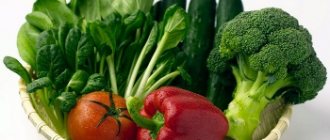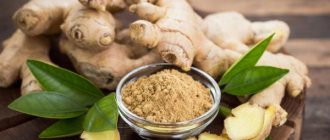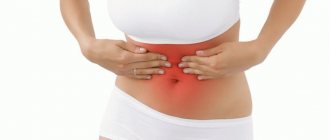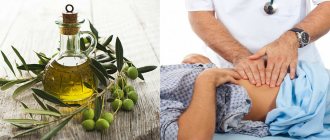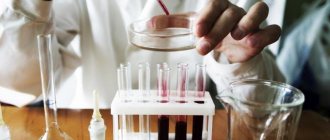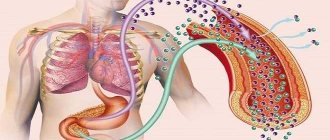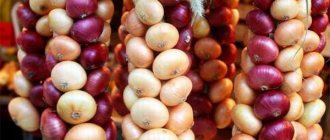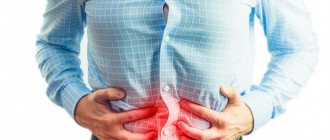With acute or chronic inflammation in the pancreatic tissue, its functional ability is primarily impaired. Normally, a healthy gland produces a large number of enzymes that are necessary for the breakdown and digestion of food, and synthesizes hormones that control the concentration of glucose in the peripheral blood.
Therapeutic nutrition for pancreatitis
In the initial period of acute pancreatitis and exacerbation of chronic pancreatitis, hunger is used for the pancreas, which provokes dynamics.
The main causes of inflammation of the gland
Provoking factors of pathology:
- chronic acalculous, calculous cholecystitis, dysfunction of the sphincter of Oddi and biliary tract;
- acute and chronic intoxication (vapors of heavy metals, etc.);
- abuse of alcoholic beverages;
- chronic gastroduodenitis;
- long-term use of steroid hormones, sulfonamides or non-steroidal anti-inflammatory drugs;
- history of infectious diseases;
- autoimmune processes, abdominal trauma;
- nutritional factor (prevalence of spicy and fried foods, instant foods, spices and confectionery in the diet).
In any case, an acute or sluggish inflammatory process develops in the organ tissue, which leads to pancreatic insufficiency and the entry of a large volume of proteolytic enzymes into the bloodstream.
Faces of illness
In acute cases, it is difficult not to notice pancreatitis. Severe pain in the upper abdomen, radiating to the back (such pain is called shingles), vomiting that does not bring relief, rapid heartbeat - all these are symptoms of inflammation that has begun in the pancreas. If acute pancreatitis causes complications, the temperature may rise on the 3rd–5th day after the onset of the disease. But until this time it is better not to endure it and consult a doctor at the first manifestations of the disease. After all, if an exacerbation occurs in a moderate or severe form, it can end in suppuration and even peritonitis.
Signs of chronic pancreatitis are less obvious. About 30–40 minutes after eating, you may experience abdominal pain, mild nausea, and decreased performance. People often lose weight, although they eat enough and with appetite. They suffer from flatulence and diarrhea. However, chronic pancreatitis sometimes occurs without symptoms, so a person becomes aware of its presence only when an exacerbation occurs. It is not much different from the manifestations of an acute form of the disease.
If you or someone close to you has such an attack, immediately call an ambulance. While she is driving, lie down, try to relax your abdominal muscles and apply a heating pad with cold water to the sore spot. You cannot take painkillers - this will only blur the clinical picture. It is also forbidden to eat or drink water.
In mild cases, the main principle of treating pancreatitis can be expressed in three words - cold, hunger and rest. You will have to abstain from food for several days; only still mineral water, rose hip decoction and weak tea are allowed. Bed rest and cold compresses on the upper abdomen are required.
However, this does not mean that you can cope with acute pancreatitis on your own. Treatment should be carried out in a hospital. It is necessary for a doctor to monitor your condition in order to notice complications in time. In addition, it is the doctor who must prescribe medications that help relieve the attack. These are painkillers and antispasmodics, enzyme and antacid drugs. If there is a threat of suppuration, antibiotics are used. For pancreatic abscess and extensive pancreatic necrosis, surgical intervention is necessary. The operation can be either abdominal or laparoscopic - it all depends on the patient’s condition and indications.
The effect of a therapeutic diet on the digestive system
Fasting for pancreatitis is usually observed during the first three days from the onset of the disease or exacerbation. Its essence lies in the fact that no food enters the stomach and underlying parts of the digestive tube at all. As a result, pepsin, hydrochloric acid, pancreatic enzymes and bile are not produced, which can irritate the gland tissue and increase intoxication.
An inflamed and damaged organ is in relative peace due to the fact that it does not need to synthesize enzymes to break down food. Since in acute pancreatitis there is a massive release of enzymes into the bloodstream, the diet helps remove endogenous intoxication.
Fasting during pancreatitis also gives time to the gland to restore its functions and damaged cells.
Locked and dangerous
The pancreas performs several functions in the body.
One of them is the production of digestive enzymes that break down proteins, fats and carbohydrates that come with food. At first they are inactive; they begin to perform their duties only when, having passed along the pancreatic duct, they enter the duodenum. This is normal. If the duct is blocked for some reason, the enzymes remain locked inside the gland. Sooner or later they become active and begin to digest - but not food, but pancreatic cells. Inflammation develops, part of the gland is destroyed, and connective tissue forms in its place. This inflammation is pancreatitis. It can be acute or chronic. In the first case, o and is observed for a relatively short period. In the second, the iron is destroyed slowly, but over a long period of time.
Both scenarios are fraught with serious complications. No other organ is capable of taking over the work of the pancreas, so the death of its tissue (pancreatic necrosis) is an irreparable loss for the body.
The consequences of acute pancreatitis are directly related to the scale of destruction. Basically, it is small - in most people the inflammation is mild. But there are also cases when almost all the iron dies. They are incompatible with life.
The most important function of the pancreas is the production of insulin, which is necessary to control blood sugar levels. The fewer cells involved in its production, the higher the risk of diabetes. It is often observed in the later stages of chronic pancreatitis. Another formidable complication is pancreatic cancer: one of the most aggressive oncological diseases, which modern medicine is practically unable to cure.
This is why problems with the pancreas cannot be ignored.
General principles of diet therapy
The opinion of doctors on fasting for pancreatitis is often unanimous, since diet for this disease is a very important and effective method of conservative therapy.
Fasting does not always mean the absolute exclusion of foods from the diet, but only their strict limitation. Normalization of the digestive tract and removal of stress from the inflamed organ occurs subject to compliance with certain rules and principles of prescribed diet therapy. It is important not only to strictly adhere to the restrictions, but also to get out of them correctly.
Main principles of the diet
We recommend reading:
- eggplants for pancreatitis;
- treatment of pancreatitis with removed gallbladder;
- causes and treatment of pancreatic necrosis.
Basic principles of the diet:
- In the first few days (usually 2-3) of pancreatic inflammation or during exacerbation of the chronic form, it is recommended to completely stop eating. You are allowed to drink only purified still water and unsweetened black tea. This helps stop intoxication, autolysis processes and relieve pain. If necessary, your doctor will extend the complete fast.
- After switching to eating food, the frequency of approaches should be at least 5-6 times a day. Portions are made small (about the size of the patient’s fist), and the principle of fractional nutrition is adhered to.
- The recommended weight of one serving should not be more than 250 grams. Otherwise, the load on the upper segments of the digestive system (in particular, the stomach) increases, which leads to increased synthesis of hydrochloric acid. This can cause increased pain and a new exacerbation of the disease.
- The products consumed must be thoroughly pureed using a blender or sieve to a puree-like consistency. This reduces the risk of irritation of the muscular and mucous membranes of the gastrointestinal tract.
- The daily diet should contain the least amount of fat, while the mass of proteins exceeds the concentration of carbohydrates several times.
- A fasting diet also implies a total exclusion from the diet of spicy, smoked and fatty foods, alcoholic and carbonated drinks, and spices.
- During an exacerbation, food should be neutral, that is, without any sweeteners, flavorings or flavorings.
- It is necessary to maintain an average temperature regime (food should not be excessively hot or cold).
Saturated and fatty broths, coffee drinks, any alcohol, raw vegetables, spicy and smoked foods are completely unacceptable during an exacerbation of the disease. If treatment occurs at home, then food should be steamed, in the oven or using a double boiler.
Where did he come from?
Pancreatitis can be caused by a birth defect in the pancreas, certain autoimmune diseases, or certain medications. The disease can be triggered by a number of infections, hepatitis B or mumps. But most often, inflammation of the pancreas is caused by alcohol abuse.
Alcohol itself has a bad effect on gland cells, causing their damage. In response to a “drink or two,” the concentration of enzymes in the digestive juice increases. It moves more slowly along the ducts and therefore can begin to act before reaching its destination. Moreover, alcohol causes spasm of the sphincter located between the pancreas and duodenum. Normally, it should allow enzymes into the intestines, but block the exit of digested food from it. After abusing alcohol, it may not open in time, blocking digestive juice in the ducts.
Scientists have calculated that in order to “earn” pancreatitis, a person must consume 150 g of alcohol daily in terms of pure alcohol for 10 years. This is 375 g of vodka, about 1 liter of wine or 3 liters of beer. Quite a lot. However, let's not forget: these are averages. For many, the reaction occurs faster. For some, it is enough to “abuse” just a few times to provoke an attack.
The most dangerous combination of alcohol with fatty, spicy, salty foods. That is why the maximum number of exacerbations occurs after the holidays, when we lean on alcohol and delicacies. Such food in itself is dangerous: doctors attribute the fact that the incidence of pancreatitis has been constantly increasing in recent years to the increase in consumption of fatty foods.
Another cause of an attack may be gallstone disease. If you draw a schematic diagram of the bile duct and pancreatic duct, they will look like rivers on a map. Both “streams” flow into the “sea” - the duodenum. In a small area in front of it, they “merge” together, forming a common channel. If a stone travels along the bile duct and gets into this part, it can block the “gate” to the pancreas, thereby causing stagnation of enzymes.
Article on the topic
The pancreas takes revenge on us for our mistakes
Diet for acute pancreatitis
In the case of the development of an acute process in the gland, foci of necrosis of various sizes are formed, up to total pancreatic necrosis. The patient experiences severe acute pain in the abdomen, severe nausea and repeated vomiting, and frequent loose stools. When a large number of proteolytic enzymes are released into the systemic circulation, body temperature rises.
Depending on the severity of the pathology, the period of complete fasting can last from three to twenty days. The duration and pattern of such a diet is determined only by the attending physician. At the initial stage, patients are allowed to drink plain clean water or lightly brewed black tea without added sugar.
In order to speed up the repair process, weakly concentrated rosehip decoctions are allowed.
After fasting with pancreatitis, you can eat dishes prepared by baking, stewing, and boiling. The daily energy mass should not exceed 2000 kcal. Food is consumed only pureed and warm, without adding spices and seasonings. For some time, fats are completely excluded from the menu, and products consisting of proteins of plant origin come to the fore.
On a daily basis, the patient should eat:
- no more than 50 grams of fat;
- about 220 grams of carbohydrate food;
- approximately 80 grams of proteins;
- drink 1.5 liters of purified water.
It is also important to be able to recover from fasting correctly: increase the amount of protein with the gradual addition of fats of plant origin, and then animal fats.
Fasting and chronic pancreatitis
The chronic form of the inflammatory process is accompanied by less pronounced symptoms of the disease. The period of exacerbation is characterized by minor discomfort from the digestive tract.
For chronic pancreatitis, nutritional recommendations are given by a nutritionist. An individual nutrition plan is drawn up. The doctor's advice must be followed strictly. If the patient relaxes himself, then the appearance of new inflammation cannot be ruled out.
It is necessary to introduce a fasting day several times a month. You can't even drink water during this time. Bed rest is required during the day. As a rule, appetite with pancreatitis decreases somewhat, and it is quite easy for the patient to withstand unloading.
A chronic disease, unlike acute pancreatitis, can be treated at home. If there is a feeling of pain in the stomach, nausea and vomiting appear, it is necessary to analyze what reasons led to this.
For example, the patient ate some prohibited product. You should avoid dry foods for several days until the severity of symptoms decreases. In addition, you can use healing herbal infusions. There are many recipes on the Internet that help relieve the symptoms of the disease.
Prolonged fasting for more than three days will not bring benefits to the body, and there is a high probability of disruption of the functionality of the pancreas and other internal organs.
Contraindications to fasting: arterial hypotension, anemia, low sugar in the body, deficiency of vitamins and minerals.
Diet for chronic disease
Chronic pancreatitis is characterized by periods of exacerbation. In this case, the symptoms of intoxication and pain are less pronounced, therefore, the degree of damage to the organ is less. Doctors often allow such patients to be treated at home.
It is recommended to fast for pancreatitis for exactly one day, since unreasonably long fasting can aggravate the course of the pathology and increase the severity of the exacerbation.
With chronic inflammation of the gland, recovery processes proceed much faster, but it is necessary to exit fasting gradually with the help of diet table No. 2 (it is an intermediate link between complete refusal of food and the patient’s usual diet). The duration of the diet is from two weeks to one to three months.
Treatment of pancreatitis by fasting is based on the following rules:
- the maximum allowable amount of calories per day is 2500;
- 50% of proteins must be of animal origin;
- fats in the diet should not exceed 80 grams, and carbohydrates – 300 grams;
- it is allowed to use no more than 7-10 grams of salt per day;
- the optimal volume of liquid is 1.5-2.0 liters.
The consistency of the dishes is puree-like, the cooking temperature corresponds to that for acute inflammation of the gland.
Forms of exacerbation of pancreatitis
With pancreatitis, there are two main forms of the disease: chronic and acute pancreatitis. Each of the forms occurs with its own characteristics, manifestations and scale of destruction for the human body.
Chronic inflammation of the pancreas
This subtype of pancreatitis occurs over a long period of time. Sometimes it takes years for chronic inflammation of the pancreas to develop. It is generally accepted that the chronic form does not cause fundamental harm to human health - this is a profound misconception.
In chronic pancreatitis, living pancreatic cells die gradually over many years, the patient's health gradually deteriorates and this is not immediately noticeable. With this form, a violation of secretory function is often observed; the pancreas can produce an insufficient amount of enzymes, which leads to disruption of nutrition and all digestive processes.
Over time, the patient may begin to suffer from side diseases, such as duodenal ulcers, constant flatulence, excess weight or underweight. With chronic pancreatitis, the symptoms are mild, pain is present only during exacerbation of chronic pancreatitis and it is tolerable, but this does not mean that the patient does not need help.
Acute form of inflammation of the pancreas
In acute pancreatitis, the symptoms are very different from the chronic form. The pain is unbearable, the patient cannot lead a normal life, and strict bed rest is required. The patient’s poor health is directly related to the destructive processes in the pancreas.
Aggravating pancreatitis is characterized by the fact that enzymes are locally blocked in the body of the gland, quickly and irreversibly destroying its healthy cells. This condition is fraught with danger to human health and life. More often, acute pancreatitis affects small areas of the pancreas, after which it can function, but in a limited state - there is a violation of secretory function, degenerative changes in tissue, the formation of connecting areas and scars.
But there are cases when, with aggravated inflammation of the pancreas, local tissue death occurs almost immediately. This can lead to pancreatic necrosis, that is, suppuration of the affected areas. Pancreatic necrosis is dangerous not only because it can destroy the entire pancreas, but also cause peritonitis of the abdominal cavity.
With pancreatic necrosis, one can observe bleeding from the tissues of the pancreas, the formation of rotting foci that quickly spread to neighboring organs.
This condition is very dangerous for human health and life, since untimely medical assistance can lead to the death of the patient from blood poisoning or peritonitis.
Cold for inflammation of the pancreas
Heating pad with ice to relieve pain from pancreatitis
As you know, cold, hunger and rest during pancreatitis are the three basic positions in relieving persistent pain. If the mechanism of fasting has become clear, then why apply something cold remains a mystery.
Cold during pancreatitis leads to a reflex spasm of small vessels and redistribution of blood flow in the gland and nearby organs. In this way, the functional load on the pancreas is reduced, and with the development of hemorrhagic pancreatitis, the intensity of bleeding from damaged parenchymal vessels is reduced.
Most often, a regular heating pad filled with ice is used, which must be applied to the abdomen, in its upper part - between the umbilical region and the xiphoid process of the sternum. It is recommended to keep it cold for no more than 30 minutes, and breaks between procedures should be 1.5-2 hours.
You should not be afraid of a “cold”, since in such a short period of time only superficial tissues - the skin and subcutaneous fatty tissue - are cooled.
Inflammation in the pancreas is a serious and dangerous pathology, which is always accompanied by severe and quite often unbearable pain. In the initial stages of the disease, in addition to painkillers, therapeutic fasting, physical rest without movement and a cold compress in the projection of the gland have a good effect.
Prevent trouble
Rare and moderate alcohol consumption, a healthy diet, and physical activity are enough to keep the pancreas healthy. And one more thing: if you don’t want to get sick, quit smoking. All other things being equal, pancreatitis occurs in heavy smokers approximately 5 years earlier than in non-smokers. And the risk of developing tumors in the pancreas in smokers is 2-3 times higher.
It is necessary to follow all these rules even if an attack has already occurred. After it is removed, you will have to add a diet to everything else. From the diet you need to exclude everything fatty, fried, spicy, rich broths, smoked foods, soda and alcohol. You will also have to give up salt, milk, pure sugar, honey and jam for a while. Among the prohibited vegetables are cabbage, legumes, spinach and radishes. But soups and purees from other vegetables are welcome. Meat and fish should be low-fat varieties: lean beef, chicken fillet, turkey, pike perch, carp. Vegetables can only be consumed boiled or steamed and preferably pureed. Fruits – baked, in the form of jelly or compote. An important component of the diet should be well-cooked porridge, for example, buckwheat or oatmeal. Fermented milk products are allowed, but they should not be too sour. It is necessary to sit down at the table often and eat little by little. All these rules will help to avoid repeated attacks and maintain health.
Hunger, cold and rest for pancreatitis as the basic principles of safe therapy
Pancreatitis can also cause fat necrosis, cysts, abscesses, and pancreatic cancer. Doctors of Tibetan medicine follow the path of eliminating the root cause of the disease. Tibetan herbal medicine, as well as the impact on biologically active points of the meridians of the pancreas and spleen, liver and gall bladder with massage, acupuncture and warming with wormwood cigars, cleanse the blood, normalize the production of bile by the liver, and increase the fiery warmth of the stomach.
If the cause of pancreatitis is gallstone disease, then herbal medicines are used to dissolve gallstones. The result of treatment is restoration of the functions of the pancreas and the cellular structure of its tissue. According to the experience of the Naran Clinic, restoration of the functions of the pancreas using Tibetan medicine methods in many cases leads to the cure of long-term chronic diseases of other organs and systems of the body: the upper respiratory tract, lungs, kidneys, heart, and helps prevent premature aging.
For a month after an exacerbation of pancreatitis, as well as during flu, colds and other infections, during exacerbation of gastritis and food allergies, follow a gentle diet that reduces the load on the pancreas. Eliminate strong broths, fatty, spicy and sour dishes, sausage, sausages, sausages, offal, smoked meats, sauerkraut and other pickles, canned food, caviar and fatty fish (stellar sturgeon, sturgeon, halibut, mullet, catfish, carp).
Nuts, mushrooms, legumes, black bread, millet, fresh baked goods, cakes, pastries, caramel, ice cream, chewing gum, kvass, coffee, cocoa, chocolate, citrus fruits, carbonated drinks are prohibited.
Do not get carried away with fresh fruits, which caring relatives usually feed to a sick family member. The strong juice effect of raw vegetables (especially cabbage, radishes, turnips and rutabaga), greens (sorrel, spinach, lettuce) and fruits are not good for the pancreas.
A menu is recommended that includes baked apples, boiled, stewed vegetables with a small addition of spices, cereal soups, lean meat, poultry and fish - boiled or in the form of steamed cutlets, meatballs; cottage cheese casserole, omelet. Suitable drinks include liquid jelly, weak compote or tea, slightly alkaline still mineral water, and for sweets – honey and jam (1–2 tablespoons).
Master the techniques of soft massage of this organ using special movements of the abdominal muscles and diaphragm. They will improve blood circulation in this area and the flow of digestive juices.
1. Inhale, exhale and hold your breath, gently but strongly drawing in your stomach, count to 3, and then relax your abdominal muscles.
2. Inhale, exhale and hold your breath. During the breathing pause, inflate your stomach as much as possible, count to 3 and relax.
3. Strongly draw in your stomach as you exhale. Hold your breath for a few seconds and relax your abdominal muscles. Actively inflate your stomach as you inhale and draw it in again as you exhale.
Medicine often does not approve of any kind of body cleansing and fasting, believing that such experiments, especially without prior consultation with a doctor, are stressful for the body. However, with the inflammatory process of the pancreas, called pancreatitis, fasting is one of the main stages of treatment. Fasting during pancreatitis will be the object of our study in this article.
Along with hunger, the patient is advised to remain in bed to relieve the burden on the digestive system. Cold treatment, in which dry cold is applied to the sore spot, is not prohibited.
The mechanism of fasting in this situation is simple. Due to the absence of food for a certain period of time, the pancreas does not need to produce enzymes in large quantities. Consequently, excess enzymes accumulated in the gland will be removed, and the organ will have the opportunity to “take a break.”
Acute pancreatitis is a very painful stage of the disease, which is also accompanied by nausea, vomiting, and sometimes a rise in temperature. In such a situation, fasting is a real salvation for the patient. Hunger, at this stage, does not cause discomfort, since appetite is most often absent. The patient must be hospitalized.
Depending on the course of the disease and the presence of concomitant pathologies, the specialist decides whether the patient can fast or not. Indeed, with diseases such as diabetes of any etiology, hypotension, hunger is contraindicated. Pregnancy is also a contraindication.
At the discretion of the doctor, dry fasting may be prescribed. This means that a person cannot eat or drink. In this case, droppers are used to maintain the body. If you are allowed to drink, then only warm, non-carbonated mineral water is allowed. The use of a weak rosehip decoction is not prohibited.
The duration of therapeutic fasting is also determined by the doctor. It can last a maximum of three days. Often, only hunger allows the patient to feel good even without the use of medications, especially in the first stages of the disease.
The symptoms of chronic pancreatitis are not as pronounced as in its acute form. A person may feel slight discomfort in the abdominal organs and slight nausea. In this case, a specialist, most often a nutritionist, develops a specific nutritional system that is gentle for the entire digestive system.
When the disease worsens, it is necessary to determine the cause of this phenomenon. Perhaps the dietary rules were violated. In such a situation, you need to consult your doctor.
An important role in the treatment of pancreatitis, along with fasting, is played by the way out of hunger, both in acute and chronic forms. It should be gradual and extremely gentle. Let's look at what you can and can't do after fasting.
| What can you do? | What not to do? |
| Meals should be fractional. The intervals between meals should be equal | The intervals between meals should not be long |
| Meals should be 5-6 times a day. The size of one serving should not exceed 200-250 g. | Take food 1-2 times a day and consume a large amount of food at one time |
| Grind food until smooth. Preferably in a blender. | Eat food in large pieces. Such food will require the body to produce a large volume of enzymes in order to break down lumps of food, which is contraindicated for pancreatitis |
| Increase healthy plant and animal proteins in your daily diet | Consume fats and carbohydrates in large quantities |
| It is recommended to boil, stew, steam and bake products. | Fry foods, use a lot of spices and hot peppers in cooking |
| Food should be warm | Eat cold or hot food |
| Drink still mineral water, weakly brewed teas, herbal infusions. | Drinking sugary carbonated drinks and alcohol |
| Authorized Products | Prohibited Products |
| Fermented milk products with low fat content (kefir, cottage cheese, yogurt) | Raw cabbage, onion, radish, garlic, radish, eggplant |
| Baked, steamed low-fat fish, poultry, beef. | Raw berries and fruits |
| Hateful vegetable broths | Coffee, strong tea |
| Yesterday's bread in small quantities | Marinated, smoked, salted foods |
| Baked fruits and vegetables (beets, potatoes, pumpkin, zucchini, apples) | Rich broths from meat and fish, offal, mushrooms |
| Porridge made from oatmeal, buckwheat in a 1:1 ratio of milk and water. | Fresh bread, baked goods |
14.07.2017
Inflammation of the pancreas is an extremely complex and severe pathology of the gastrointestinal tract, which requires systematic treatment.
Most often, with pancreatitis - inflammation of the pancreas - patients experience painful attacks that need to be treated urgently. There is an opinion among some doctors that dry fasting helps with this.
Indeed, fasting during pancreatitis can eliminate spasm, so why not use this technique.
Of course, pancreatitis cannot be cured by fasting, but recently doctors have revised the basic positions of therapeutic fasting and recognized that fasting is an undoubted advantage for the digestive system, because the body gives rest to all participants in the digestive process. Therefore, hunger during pancreatitis is not only useful, but also a necessary element in the treatment of the disease.
When pancreatitis worsens, the pancreas needs absolute rest. It should not secrete its juice, which means that food that provokes the secretion of gland secretion should not enter the body.
Also, doctors insist not only on nutritional rest, but also on physical rest. Patients in the acute stage are prescribed bed rest and lack of physical activity.
Dry fasting for pancreatitis is recommended by doctors for no more than three days. This is the average period during which the pancreas begins to recover, and the patient experiences spastic attacks.
Such fasting for pancreatitis and cholecystitis becomes truly life-saving for those patients who suffer from severe pain that cannot be relieved even with painkillers.
The positive effect is due to the fact that food does not enter the body and gastric juice, bile and other enzymes for digesting food are not secreted. A person voluntarily puts the digestive system into a sleeping state.
What is dry fasting: basic principles of treatment
Of course, pancreatitis cannot be cured by fasting, but recently doctors have revised the basic positions of therapeutic fasting and recognized that fasting is an undoubted advantage for the digestive system, because the body gives rest to all participants in the digestive process. Therefore, hunger during pancreatitis is not only useful, but also a necessary element in the treatment of the disease.
When pancreatitis worsens, the pancreas needs absolute rest. It should not secrete its juice, which means that food that provokes the secretion of gland secretion should not enter the body. Also, doctors insist not only on nutritional rest, but also on physical rest. Patients in the acute stage are prescribed bed rest and lack of physical activity. Since fasting for pancreatitis is quite strict, it concerns not only food, but also drinking, such fasting is called dry fasting.
